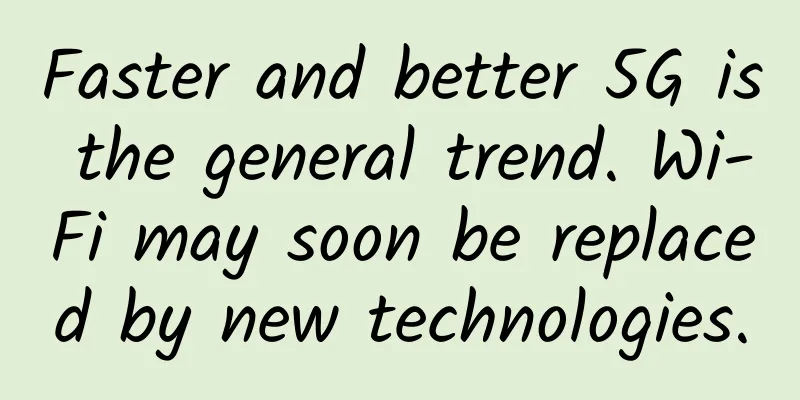5G is coming soon. What preparations have the major equipment operators made?

|
With major telecom operators around the world expected to offer 5G services this year, companies looking to take advantage of the new mobile data service need to start thinking about how to capture a piece of the action in specific use cases. Anticipation for 5G is high, given its benefits. It promises faster speeds and lower latency than 4G LTE, the current high-end wireless technology. Ideally, 5G networks could provide fast internet to countries where wired broadband isn’t available, and more reliable connections for a wide range of devices, including computers and smartphones as well as appliances, cars and security systems. But to offer these services as a WAN option, companies need hardware that connects to existing wired and wireless LANs. Here's a rundown of the equipment makers known to be offering networking gear.
1. D-Link: 5G Gateway D-Link announced its DWR-2010 5G NR Enhanced Gateway in January. The device accepts a SIM card to receive 5G and 4G LTE signals from a carrier and routes them to devices connected to it via Wi-Fi or Ethernet. It features AC 2600 dual-band Wi-Fi (each band can transmit up to 800 Mbps and 1732 Mbps) and 5 Ethernet ports.
D-Link’s 5G NR Enhanced Gateway will be available in the second half of 2019 It not only supports D-Link's own Wi-Fi Mesh technology, but can also be connected to other D-Link routers, allowing users to make voice calls on the operator's LTE network via LTE. Whether this is true remains to be seen, with the DWR-2010 scheduled for release in the second half of 2019, and many D-Link devices being sold to the public. The company's devices are priced "variously," depending on which 5G carrier will be offering service to its customers. 2. HTC: 5G Hub HTC and Sprint announced in November that they were working together to develop a mobile 5G "smart hub" to support the carrier's 5G network. (Sprint's 5G network will launch in the first half of this year.) Initial announcements indicated the device would use Qualcomm's Snapdragon X50 5G modem chipset. More details were revealed in December when Australian carrier Telstra prepared to use a 5G hub developed by HTC on its 5G network. HTC's 5G hub has a smartphone-sized display that shows status information for 5G and Wi-Fi signals, as well as status information for connected devices. Presumably, this display can also be used to display pictures and videos. At the time of writing, it has not been confirmed that the HTC 5G hub is the same smart hub that Sprint will sell users to use on its 5G network. 3. Huawei: 5G equipment Last February, Huawei announced that it would be running its own 5G chipset, the Balong 5G01. The company claimed that it would be the first to support the final 5G specifications approved by 3GPP. Huawei also released two 5G router devices: a large device that includes indoor and outdoor models, and a smaller device for indoor use. At the time, the larger 5G device was being tested by Telus, a Canadian operator. But ongoing controversy has hampered Huawei's plans. The US government has accused Huawei of spying through its equipment, perhaps at the behest of the Chinese government. As a result, Huawei has been banned from supplying equipment to the United States' emerging 5G networks. Australia and New Zealand have also decided to completely ban Huawei from the deployment of 5G infrastructure. 4. Inseeg: 5G mobile hotspot Insego has two 5G routers, both for Verizon's 5G network, which launched in October. First up is the R 1000, a white cylinder that receives 5G signals from Verizon towers and forwards them to devices connected to it. It uses Wi-Fi with 4x4 MIMO technology and voice over LTE, has Power over Ethernet, and has a replaceable battery.
Insego's MiFi 5G NR mobile hotspot device supports new Wi-Fi 6 protocol, 802.11 AX Another Inseego device, which has yet to have a shipping date, is the MiFi 5G NR, which runs Qualcomm's new Snapdragon 855 processor and Snapdragon X50 5G modem chipset, has a display for showing connection status and data usage, and supports the new Wi-Fi 6 protocol (AKA 802.11 ax).
5. NetGear: Nighthawk 5G Mobile Hotspot NETGEAR claims that the Nighthawk 5G mobile hotspot is the first network device that meets the 5G standard. The Nighthawk will be released in the United States this spring. The device will be specifically used for AT&T's 5G network, which was launched in 12 cities in the United States in December last year. The price of Nighthawk is $500.
NetGear's Nighthawk 5G mobile hotspot will be available on AT&T's 5G network It uses Qualcomm's Snapdragon X50 5G modem chipset and includes a display that shows statistics. The display will show information such as how much data you have used on your AT&T allotment plan, the devices connected to the plan, and signal strength. These are the features of the device as of this writing. The Nighthawk 5G will likely include features similar to NetGear's Nighthawk LTE mobile hotspot router, which is also a feature of AT&T's network. The LTE version supports up to 20 devices connected to the hotspot via Wi-Fi. It also offers parental controls for use in office environments, for example, for blocking content types and websites. 6. Nokia: Merging mobile and networks divisions This is a company to watch, even though it has yet to release any consumer 5G devices. Over the past few years, Nokia has been at the forefront of developing and testing 5G hardware for use in carrier networks, including 5G base stations in partnership with Qualcomm. T-Mobile acquired $3.5 billion worth of Nokia 5G hardware to build out its 5G network. Nokia has established an access network division to further expand its business into the global 5G market. Internally, the company has merged its independent mobile and network business units. Nokia is likely to use this unit to develop 5G routers or other equipment for customers of US 5G operators. 7. Samsung: Indoor and outdoor 5G routers In 2018, Samsung partnered with Verizon to develop 5G networks for commercial and home use, and last February the company announced that its 5G FWA (fixed wireless access) unit was the first to receive FCC approval. The device is an antenna base enclosed in a white rectangular box with rounded corners and edges. This means the device will need to be installed outdoors to receive 5G signals from Verizon's towers. The device will then resend the signal to a 5G router, to which a computer or other device can connect via Wi-Fi or Ethernet.
Samsung's 5G commercial router lineup includes indoor and outdoor devices Samsung has developed separate indoor and outdoor 5G routers. The indoor model looks like a typical, square router propped up vertically, and Samsung says it should be positioned in a window to better receive 5G signals transmitted by 5G FWA. The outdoor version resembles a speaker. The devices will be available to customers of Verizon's 5G Home service, which will launch in Houston, Indianapolis, Los Angeles and Sacramento in October. |
>>: The next corner of the Internet of Things is not love, but 5G
Recommend
Photos: 2017 Huawei Connect Conference leaders and guests' wise words
HUAWEI CONNECT 2017 opened on September 5 at the ...
DMIT: $36.9/year-1GB/10G SSD/450GB@500Mbps/Los Angeles CN2 GIA
DMIT has released the latest special package for ...
5 Strategies for Monetizing Mobile Edge Computing (MEC)
In the past few years, cloud services have been u...
5G paves the way for the 14th Five-Year Plan and sets sail for a new era of digital economy
The year 2020 has multiple "identities"...
What are the main problems facing 5G networks?
5G networks are the next generation of wireless t...
The three major operators are launching preferential packages. How do you “change to a new one”?
Recently, some mobile phone users have found that...
Is intelligent virtualization technology eliminating data silos?
In the ever-changing information age, companies t...
What will the Internet look like in 10 years?
The Internet has evolved tremendously over the pa...
Why consider 800G now?
Increased demand for home offices, streaming serv...
Catch it all - Webpack project packaging 1
[[427986]] This article is reprinted from the WeC...
Ethernet welcomes new growth: Experts' view on automotive Ethernet and AVB technology
Before discussing automotive Ethernet, let’s take...
5G: Smart cities’ potential to transform public services
While drawing parallels between 5G and national s...
Interviewer: Tell me how Nginx handles requests? Why doesn't Nginx use a multi-threaded model? What are the Nginx load balancing algorithms? What are forward and reverse proxies?
Interviewer: Can you tell me how Nginx handles re...
PacificRack: $14.55/year KVM-2GB/100GB/7TB/Los Angeles data center
PacificRack has recently released some unusual pa...
How to continue writing “Extraordinary Jiangsu”?
[51CTO.com original article] On August 8, at the ...









